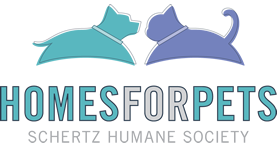By Chuck McCollough
“The measure of a society is how it treats its weakest members” – Anonymous.
As defined by the saying above – the new Schertz Animal Adoption Center, or AAC, is a heart-warming testament to the caring community that built it.
In 2010, Schertz voters approved a number of quality-of-life bond issues including spending more than $2 million for a state-of-the art facility for stray cats and dogs – among the weakest members of our society.
How was that a quality-of-life issue for stray cats and dogs?
The answer is in the name of the new facility – adoption.
The old facility was called Animal Control. The new one is all about finding homes for healthy kittens and cats and puppies and dogs.
And a loving pet brings its own quality-of-life to its family.
“The completion of the new Animal Adoption Center marks a milestone in furthering our commitment to ongoing quality of life projects in Schertz,” said Mayor Michael Carpenter
“The title alone is reflective of our attitude toward animals and the people who care for them. No longer is this the animal control building or the proverbial ‘dog pound.’ The connotation is one of caregiving and innovation – the new facility allows us to make that strong statement and directional change with a very loud voice,” the mayor added.
And that voice is heard, according to the response to the new facility.
“We had around seven adoptions our first week. That’s pretty good considering people were still finding us in our new location,” said Shanna Roman, City of Schertz Animal Services Manager.
The Schertz Animal Adoption Center – located at 800 Community Circle Drive – had a soft opening on March 26 and a festive grand opening on April 15 that included local pet vendors and veterinarians with booths to provide information about area services for new and current pet owners.
Comparing the old Animal Control facility on Borgfeld Road to the new one is the difference between night and day.
“Our Animal Adoption Center has 12,000 square – more than twice the size of the old facility – and kennel space to hold 90 animals compared to 44 max at the Borgfeld site,” Roman said.
But more room is just part of the big difference. The new facility was planned with input from Animal Services staff, local animal rescue groups like Homes for Pets and others.
The result for AAC is a quantum leap in animal care and reflects the city’s resolve to find homes for as many cats and dogs as possible.
“When we moved the animals to AAC they looked better, they looked happier. And staff was so self-motivated about getting here we moved ourselves instead of using a professional mover and we did it ahead of schedule,” Roman said.
“We have isolation rooms that will potentially save many lives by preventing the spread of illness and disease. Our HVAC system is state of the art and will prevent airborne diseases from spreading through the building,” Roman said.
Two of the unique features of the Animal Adoption Center is all-hours showcasing of a particular cat and dog.
Glass enclosures at the front of the building allow people visiting after business hours a chance to see a cat in one window and a dog in the other they may want to adopt.
“People love that window display!” Roman said. “It is a very good design on the city’s part. We have a ‘pet shop’ feel that differentiates us from the typical animal control operation.”
One of the biggest differences between the old and new facilities is the better comfort for animals and staff.
Animals in kennels at the old location were impacted by the weather because the cages were open to the elements. At the new AAC the cats and dogs are in a climate-controlled environment for better comfort.
AAC also offers more room for staff to do their jobs and has dedicated space for veterinarians to do on-site spay and neuter operations and for people to visit and socialize with an animal they are considering for adoption.
On either end of the AAC building are fenced, grassy areas for dogs to get exercise and just be a dog.
On one end of the building, animals are received, evaluated and processed for movement to the other side where they are candidates for adoption.
“Our new facility allows us be more efficient in what we do. For instance, it is twice as big as the old facility but takes half as long – two hours – to clean at night,” Roman said.
So far several other cities have visited or called about visiting AAC to do research on improving their own animal control service, Roman noted.
AAC was not only designed and built with input from the public, its operation is aided by volunteers from the public.
Sabrina Leuthold and four-year-old daughter, Olivia, are two such volunteers.
“We love coming here,” Sabrina said while feeding a tiny, days-old kitten with an eye-dropper as Olivia sat on the floor gently holding another, somewhat older kitten.
“Olivia just loves animals and gets a chance play with a number of them and also help out,” the mom said as the little girl flashed a big smile and cuddled her little new friend.







